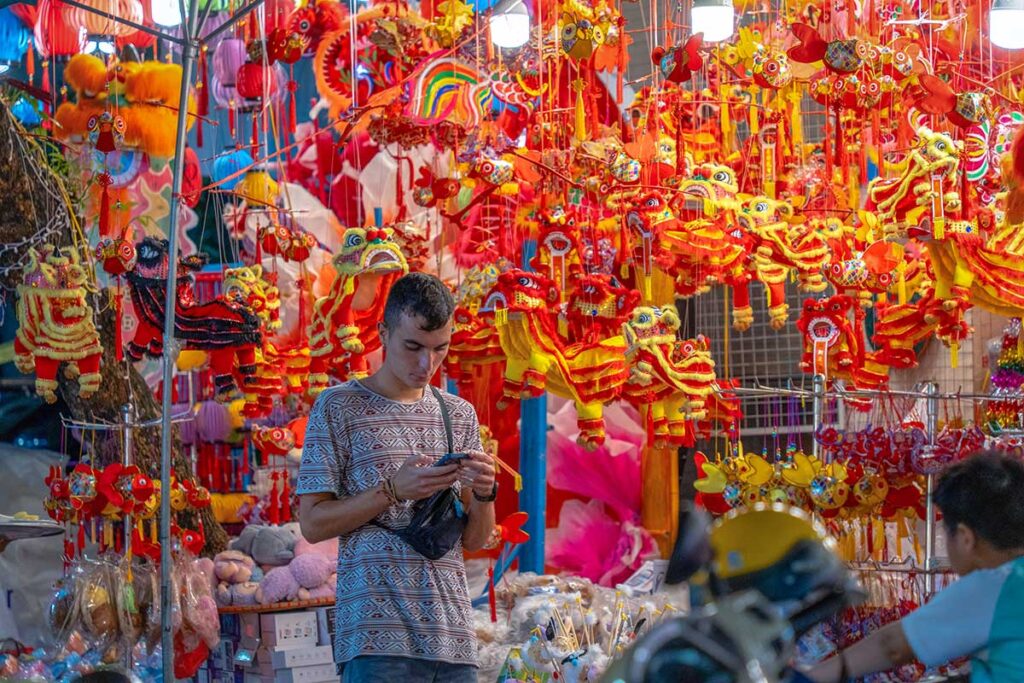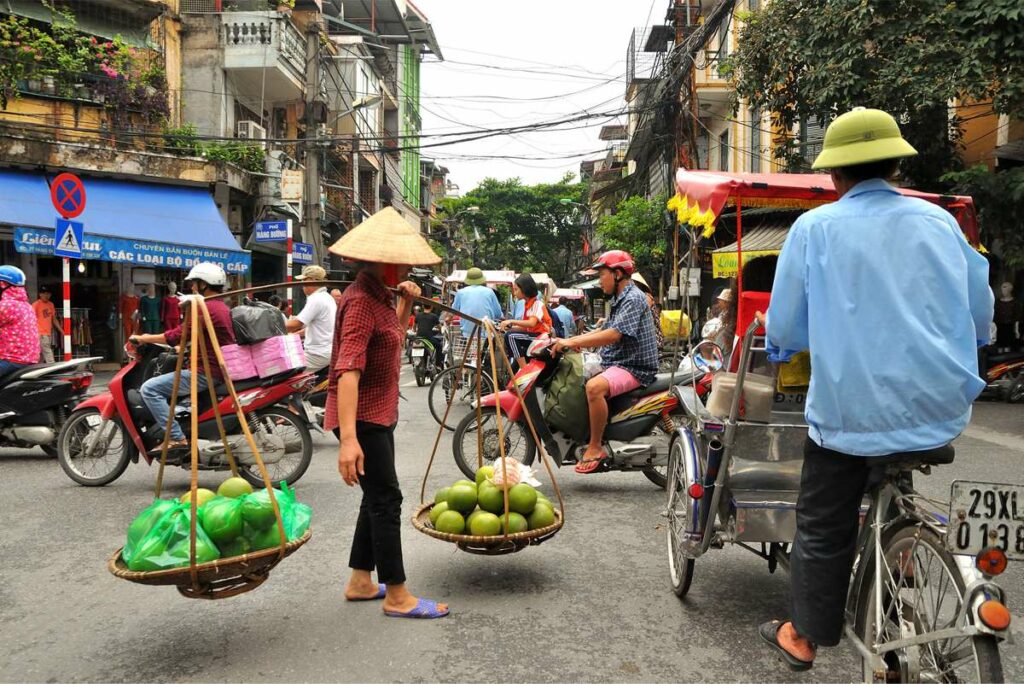What is the Mid Autumn Festival?
The Mid Autumn Festival, celebrated on the 15th day of the 8th lunar month, is one of Vietnam’s most cherished traditional holidays. In Hanoi and across the country, it is often called the Children’s Festival, as kids are at the heart of the celebrations with lantern parades, lion dances, and gifts of toys or sweets.
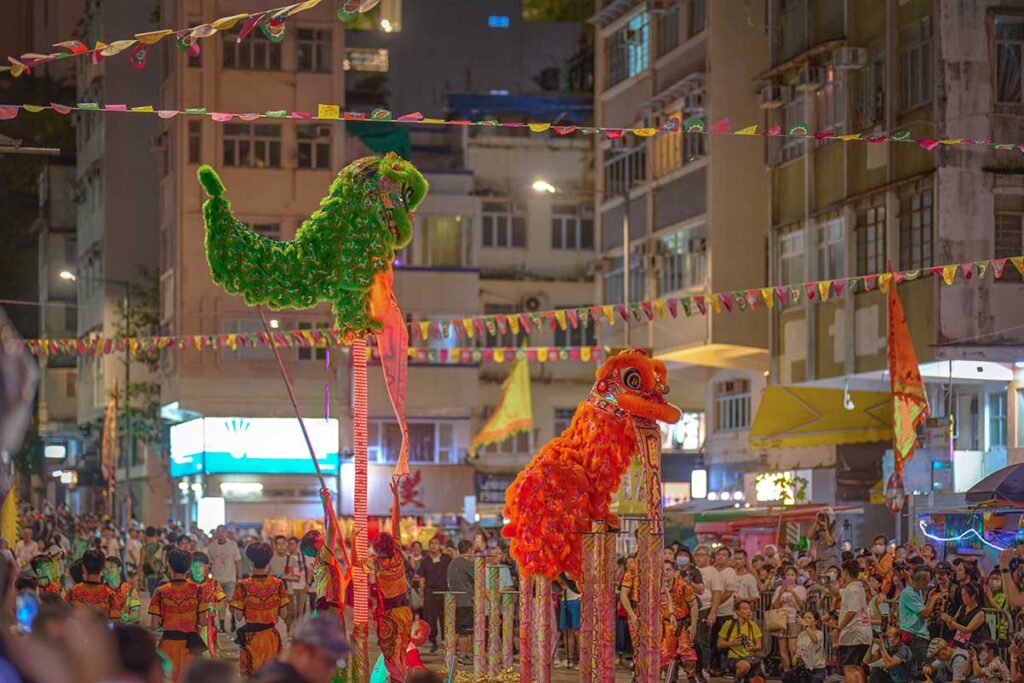
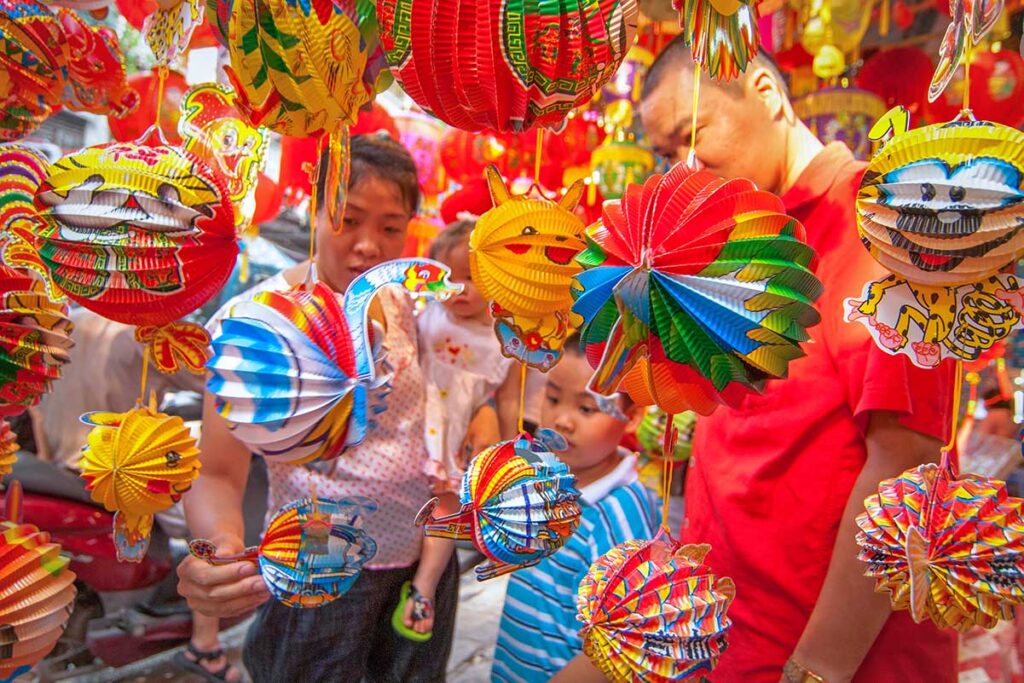
Beyond the fun for children, the festival also carries a deeper meaning for families, who gather to share mooncakes and enjoy the full moon together. If you want to dive deeper into the origins, legends, and celebrations across the country, read our full guide to the Mid Autumn Festival in Vietnam.
When is the Mid Autumn Festival?
The Mid Autumn Festival in Hanoi takes place on the 15th day of the 8th lunar month, which usually falls in September (sometimes late September or early October, depending on the year). Because Vietnam follows the lunar calendar for traditional holidays, the exact date changes each year.
It’s important to know that the celebration is not just one evening. In the weeks leading up to the festival, you’ll already see Hanoi transform: streets fill with stalls selling lanterns and toys, lion dance troupes start practicing in alleys, and bakeries put out endless varieties of mooncakes. By the time the actual full moon night arrives, the city is already buzzing with a festive atmosphere.
For travelers, this means you don’t have to be in Hanoi only on the exact date — the days before the festival are often just as lively, sometimes even easier to enjoy without the overwhelming crowds of the main night.
Best things to do for the Mid Autumn Festival in Hanoi
The Mid Autumn Festival in Hanoi is less about one big official event and more about the city coming alive in different corners. From crowded lantern streets to small neighborhood lion dances, here are the main places and activities worth checking out.
1. Hang Ma Street and the Old Quarter
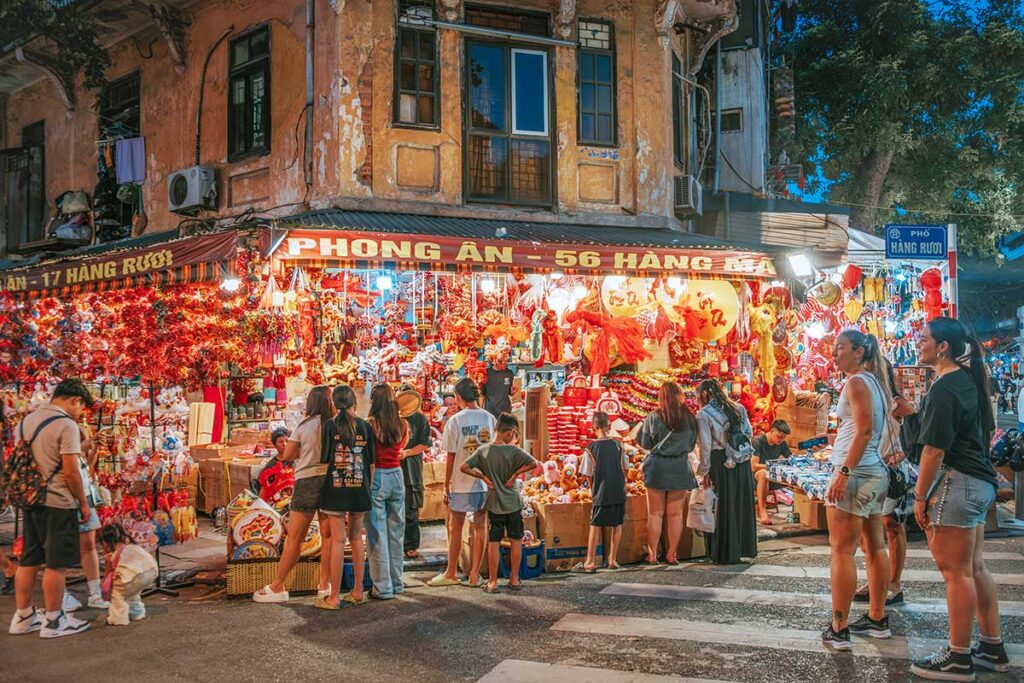
If there’s one place that symbolizes the festival in Hanoi, it’s Hang Ma Street in the Old Quarter. In the weeks before the full moon, the narrow street is lined with lanterns, drums, masks, and toys, all sold for families preparing for the celebrations. For tourists, it’s the most atmospheric spot to soak up the vibe, but also the most overcrowded.
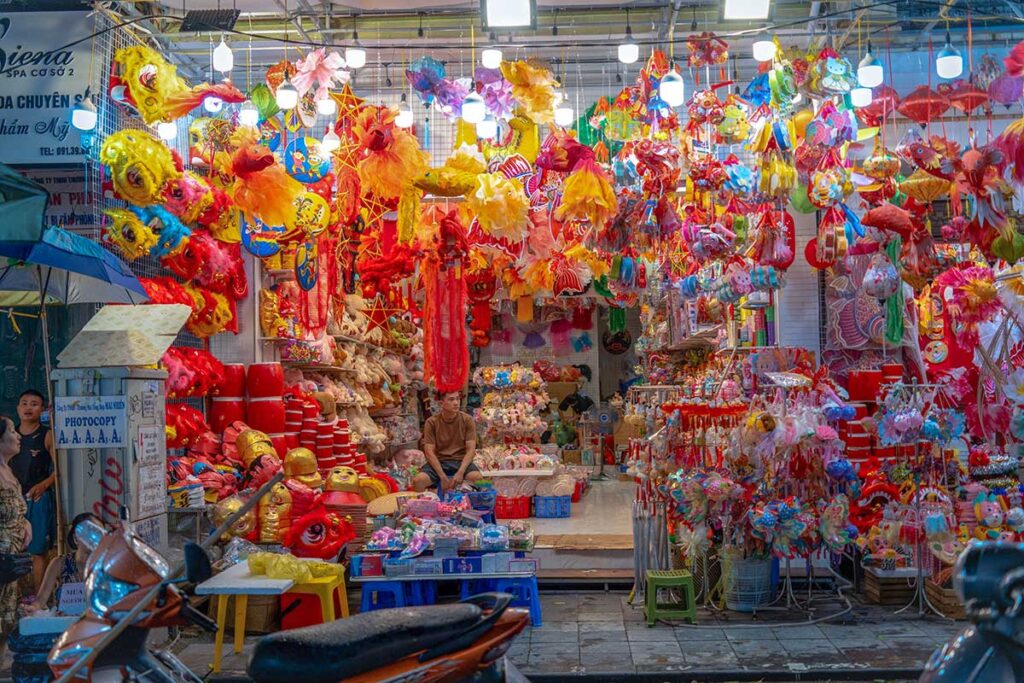
On the nights closest to the festival, it can be shoulder-to-shoulder, so be ready for the chaos. The best time to visit is after sunset when the lanterns are glowing, though if you want photos without being crushed by the crowds, come earlier in the evening.
2. Hoan Kiem Lake & Walking Street
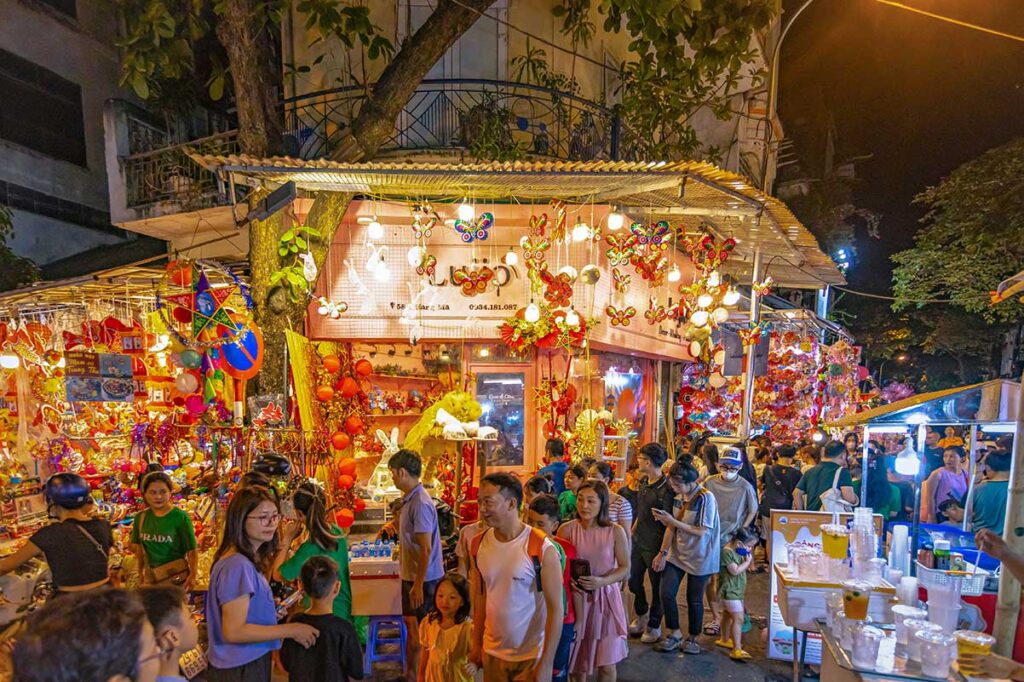
The pedestrian zone around Hoan Kiem Lake becomes another hub during the festival. Families gather, children show off their lanterns, and lion dance groups perform for the crowds. On the main night, expect live music, traditional games, and a buzzing atmosphere until late. It’s a more open space than Hang Ma, which makes it easier for families with kids, but it’s still very busy.
3. Lion Dances
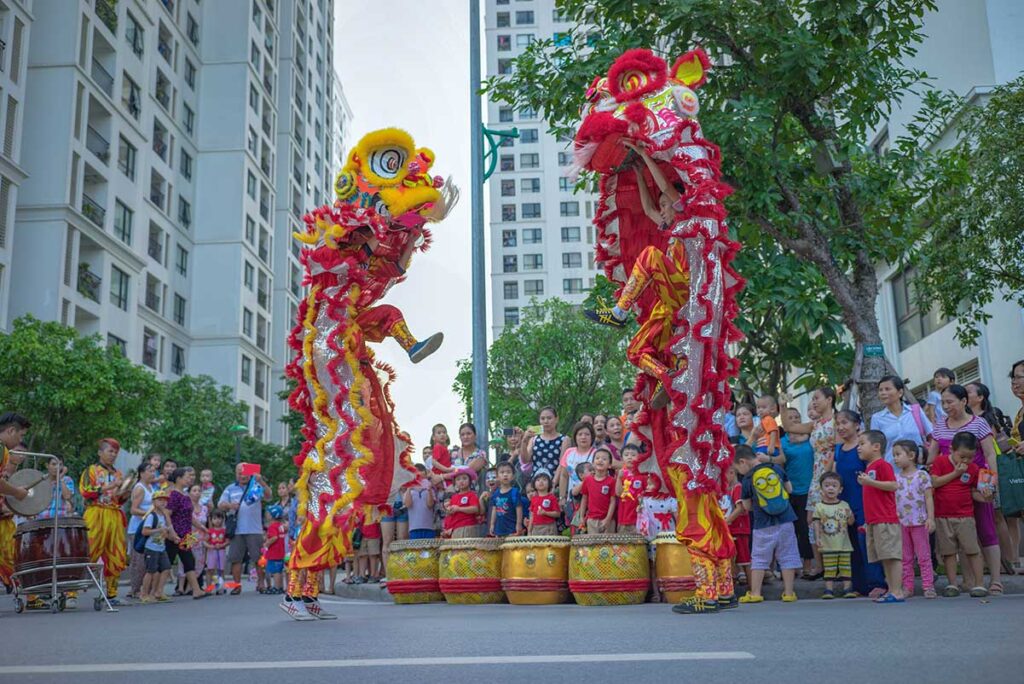
Unlike fireworks at Tet, lion dances during the Mid Autumn Festival don’t happen at one set place and time. Instead, local troupes roam the city, performing in alleys, at schools, in front of houses, or even inside shopping malls. If you’re wandering around Hanoi in the evenings before the festival, you’ll almost certainly stumble across one. For the best chance, ask your hotel if they know about local performances nearby.
4. Thang Long Imperial Citadel
The Thang Long Imperial Citadel hosts a cultural program called Shimmering Autumn Lights. It’s quieter than the Old Quarter but offers a more educational take on the festival. You’ll find reconstructed traditional lanterns, exhibitions of old toys, and hands-on workshops like lantern-making, mooncake baking, or paper mask crafting. If you want to escape the crush of Hang Ma while still experiencing the traditions, this is a good option.
5. Traditional Houses & Cultural Centers
Several cultural spots in Hanoi recreate how Mid Autumn was celebrated in the past:
- Heritage House at 87 Ma May – exhibitions about old Hanoi family celebrations.
- Phung Hung Mural Street – decorated with lights and hosting folk games like tug of war or bamboo dancing.
- Temple of Literature (Van Mieu) – often organizes special themed programs such as Carp Watching the Moon, blending cultural displays with educational activities.
These places are less hectic than the Old Quarter and give a more cultural perspective on the festival.
6. Coffee Shops, Hotels & Shopping Malls
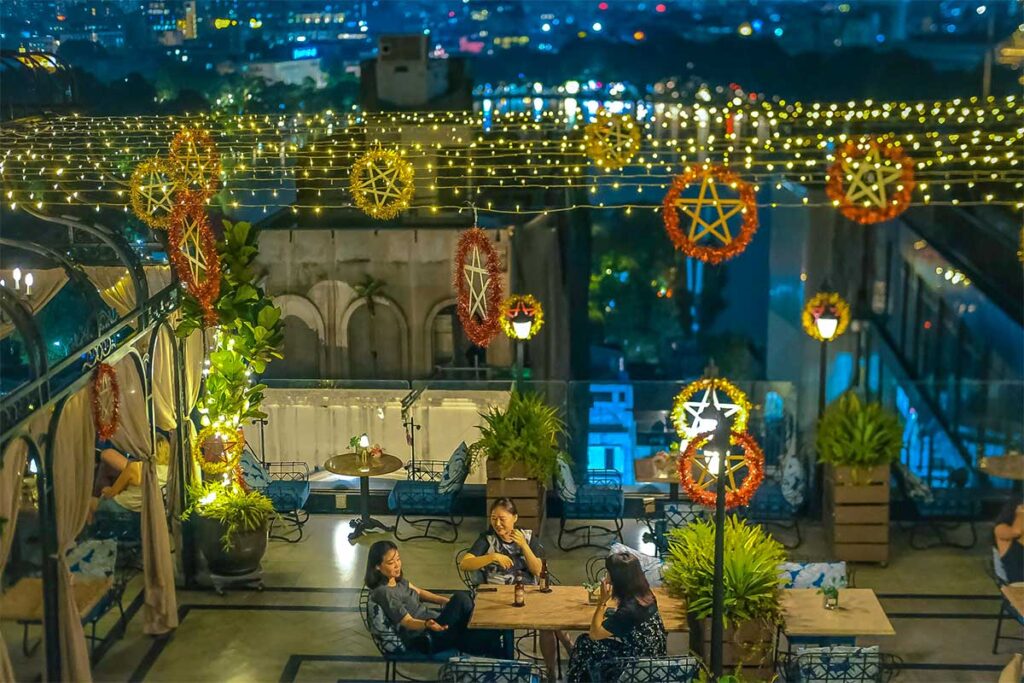
During the festival period, many cafés and hotels in Hanoi put up lantern decorations and festive corners that make for cozy photos without the crowds. Major shopping malls such as Vincom, Aeon, and Lotte often host their own events with lion dances, lantern workshops, and family activities. It’s not as traditional, but if you’re traveling with children it can be a convenient way to join the fun in a calmer setting.
7. Food & Seasonal Treats
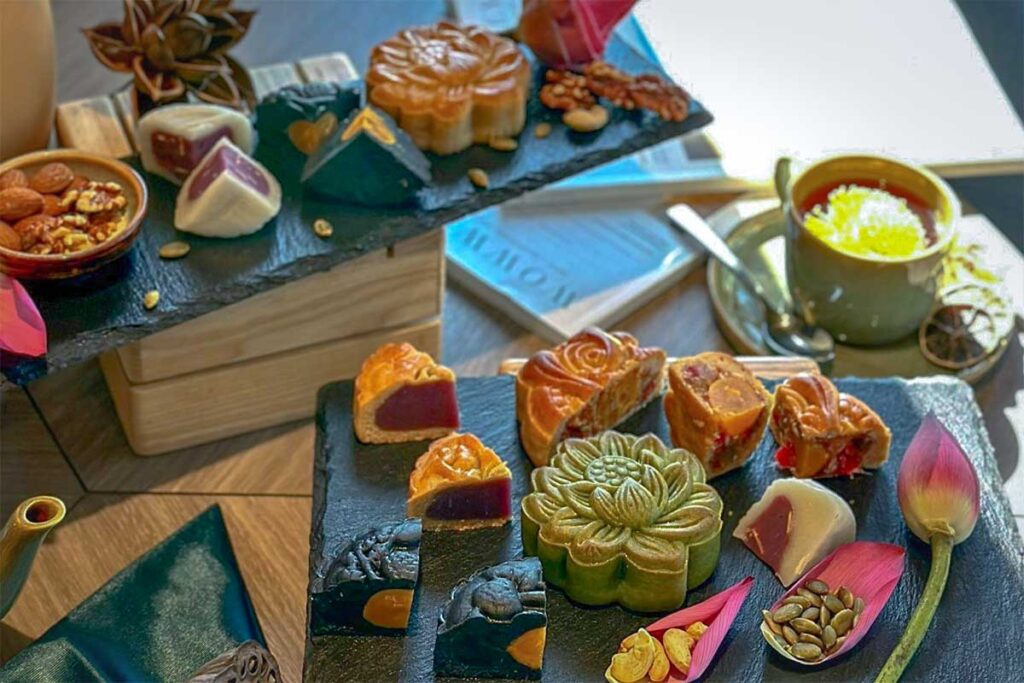
No Mid Autumn Festival is complete without food. In Hanoi, two highlights stand out:
- Mooncakes – both baked and soft varieties. Traditional fillings include mung bean, lotus seed, and salted egg yolk. For an authentic taste, try long-standing bakeries like Bao Phuong (Thuy Khue Street), Ba Dan (Truong Chinh Street), or Ninh Huong (Hang Dieu Street). Expect queues in the days before the festival.
- Cốm (green rice) – a seasonal delicacy made from young sticky rice, sold by street vendors wrapped in lotus leaves. Best enjoyed in the weeks around the festival.
- You’ll also find plenty of street snacks in the Old Quarter during festival nights, from roasted chestnuts to sweet rice cakes — though prices can be inflated for tourists, so shop around.
Travel tips for celebrating the Festival in Hanoi
Unlike Tet or other big national holidays, the Mid Autumn Festival in Hanoi feels more community-based than centrally organized. That makes it fun to explore, but also means it’s worth keeping a few practical tips in mind.
Connect with Locals
Most of the celebrations happen within families and neighborhoods. If you’re invited to join, whether it’s sharing mooncakes or watching kids with lanterns, it’s often the most memorable way to experience the festival. Don’t expect one huge citywide show — it’s more about small, scattered events across Hanoi.
Confirm Dates
The festival date changes every year, as it follows the lunar calendar. For planning, check the exact date in advance. Keep in mind that decorations, lion dances, and markets start weeks before, so even if you’re not there on the exact night, you’ll still catch the atmosphere.
Handle the Crowds
The Old Quarter, especially Hang Ma Street, can get extremely packed. Families with young children may find it overwhelming, and there’s a small risk of pickpockets in tight spaces. If you want to bring kids, go earlier in the evening. For adults, later at night the atmosphere is livelier but also hotter and more chaotic.
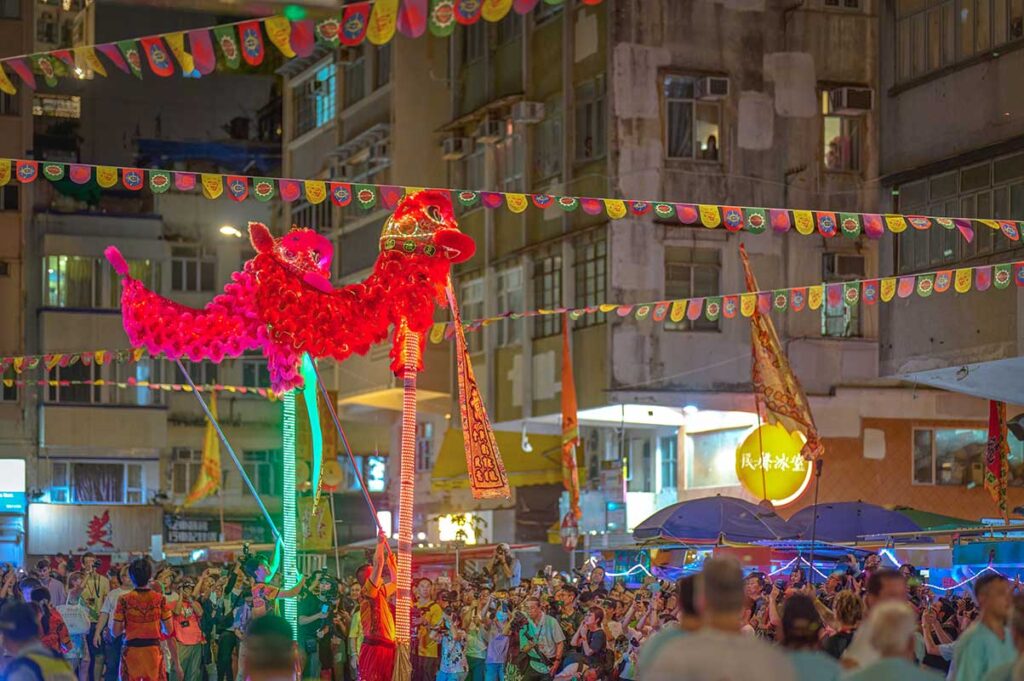
Weather in Hanoi during Mid Autumn Festival
The festival usually falls in September, when Hanoi is still hot, humid, and prone to evening rain showers. In some years it can stretch into early October, when the weather is cooler and drier. If you want detailed weather advice, see our guides to Hanoi in September and Hanoi in October.
Practical advice
- Carry small change if you want to buy lanterns, snacks, or toys on the street.
- Be aware that tourist prices can be inflated, especially for toys and photo props.
- If you’re interested in photography, arrive before peak hours to capture the lanterns while the streets are still manageable.
Is the Mid Autumn Festival in Hanoi worth experiencing?
The Mid Autumn Festival in Hanoi is one of those events that gives you a real window into local life. The lantern-filled streets, lion dances, and mooncakes make it a uniquely Vietnamese cultural experience. At the same time, you should be prepared for the reality: the crowds in the Old Quarter can be overwhelming, and moving through the busiest spots often takes patience.
For families, the festival is a fun way to let children join in a tradition that’s truly focused on kids. For culture lovers, it’s a chance to see how Hanoi blends community, tradition, and celebration in its own way. And for photographers, the glowing lanterns and street life create some of the most atmospheric scenes you’ll find all year.
